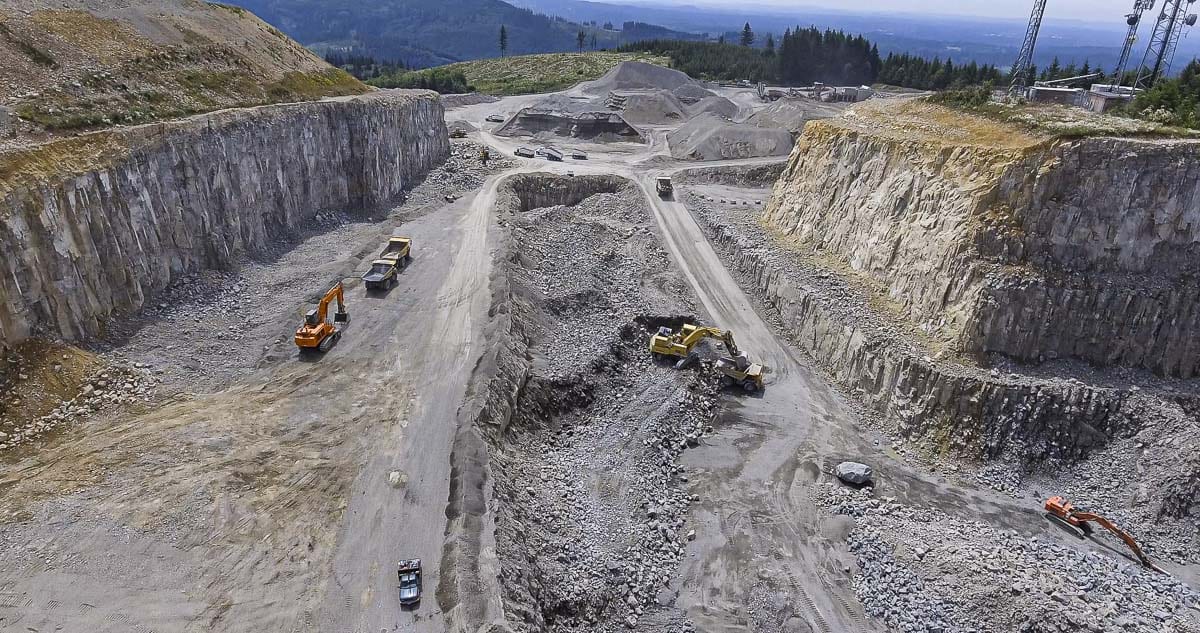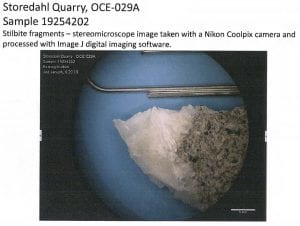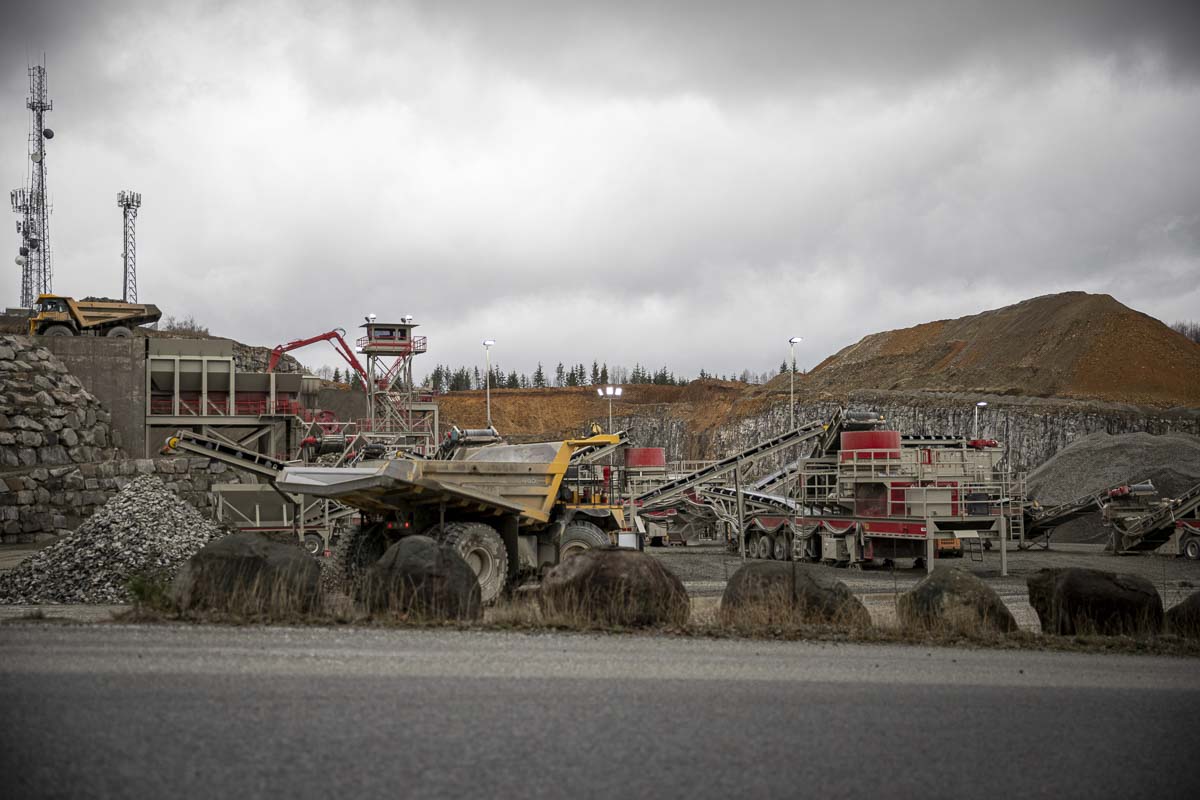Suspected mordenite and erionite not present in 12 locations tested by the EPA
YACOLT — The U.S. Environmental Protection Agency (EPA) has released its findings on site reconnaissance sampling conducted at Yacolt Mountain Quarry, which is operated by JL Storedahl and Sons in Clark County.

The testing focused on a search for two potentially harmful minerals within the mine’s rock products; that is erionnite and mordenite, similar to naturally occurring asbestos. The EPA has concluded that within the 12 test sites on and off the quarry there is no erionite or mordenite present.
“I’m glad that what was alleged, wasn’t there, and the results were kind of what I expected,” said Bo Storedahl, a representative from JL Storedahl and Sons. “I did some research after the allegation was made, and it didn’t appear likely that it would be there. And it turns out that it wasn’t.”
This result comes after months of delays, due to the government shutdown at the end of 2018 and technical problems at the lab where analysis was conducted. The initial samples were collected and submitted in June of this year.
The results are a major development in the ongoing contention surrounding the mountain top mine between neighbors, the mine operator and the county.
Test results conducted by Willamette Geological Services on behalf of neighbors Gary and Marie Ogier in 2013, suggested there was mordenite present, and was followed by an independent analysis at their home two miles from the mine in the last few years which suggested a similar conclusion.

At the request of the Ogiers and many others participating in the county’s Surface Mining Advisory Committee (SMAC), including East Fork Community Coalition President Dick Leeuennberg, the county and the operator contacted the Southwest Clean Air Agency (SWCAA) and the EPA to do further testing.
“Samples were collected from various locations, both on-site and offsite, and analyzed by the EPA Laboratory in Port Orchard, WA,” said Paul Mairose, the chief engineer at the SWCAA, in an email to the county, neighbors and the operator. “Funding and analysis for this project was provided by the U.S. Environmental Protection Agency – Region 10.”
Results were compiled by the EPA’s Jed Januch, an environmental protection specialist with the Laboratory Service Branch. In his summary, Januch explained that the recon and analysis consisted of four main procedures, including x-ray diffraction and light microscope methods.
“I did not detect the zeolites erionite or mordenite in the samples submitted for analysis for this project,” Januch wrote in his summary. “The analysis did reveal the presence of a zeolite mineral called stilbite, as well as other minerals including quartz, smectite, mica, amphibole, feldspar, pyroxene, and iron oxide.”

The zeolites Januch found, including stilbite, are considered by the EPA and SWCAA to be innocuous in nature, but they do not altogether rule out the presence of mordenite and erinote somewhere in the area; each a zeolite with potential health concerns according to studies done by Suzuki and scientists in Turkey.
“While there was no mordenite or erionite found in the samples, we can not conclude that there is absolutely no mordenite or erionite at the site,” Mairose said. “What we can defend is that given the robust sample locations and the geological formation of the pit, mordenite and erionite are not expected to be present in quantities that would present a health hazard.”
By and large, reactions have been positive, coming from neighbors, the operator and the county.
“It’s good news to find out that the community is not being poisoned,” said Dick Leeuennberg. “That doesn’t make any of the other negatives of that quarry go away, it doesn’t change any of those other things that people have been living with. We have a qualified person that’s advising us and we’re going to wait until we hear from her … Then we’ll have a more informed opinion.”
Through SMAC meetings, Leeuennberg and others have expressed great concerns with noise derived from blasting and truck traffic around the mine. Other concerns have focused on the trip counts of trucks, untarped loads, groundwater contamination, hours of operation, lack of blasting notifications, and most of all expansion of the operation.

Leeuennberg and Marie Ogier are currently working with Dr. Alyssa Shiel from Oregon State University (OSU) to better understand and vet the findings, they said. Shiel is an assistant professor of geology and geophysics as well as the science liaison for a Thriving Earth Exchange project on the quarry.
“I guess my first response is relief,” Ogier said. “I want them to look at this and tell us what it means. I have, actually more questions than opinions … Our scientists are investigating, to read the study and report themselves.”
“I wasn’t necessarily expecting or anticipating that the results would fall either way, you know, I mean, that’s why the analyses were done,” said neighbor and 40-year ecologist on Mt. St. Helens, Charlie Crisafulli. “From my perspective, the analyses were done to determine if they were there, and if they were there, at what concentrations, and then what are the next steps. And then, of course, if they weren’t detected, at least in those samples, then that issue has been more or less put to rest, at least in my mind.”
“I’m extremely relieved,” said neighbor Linda Lorenz. “I didn’t want that stuff in there. It will be harder to shut the mine down, but I’m still relieved. No, I did not want to have that in the streams or the air.”
At the county, Community Development Director Mitch Nickolds is preparing to host the next SMAC meeting in mid December. The next gathering will likely feature a representation from SWCAA or the EPA.
“We’re pleased that the suspected elements were not detected,” Nickolds said. “We look forward to an opportunity to bring the results and hopefully an EPA toxicologist to the next Surface Mining Advisory Committee meeting to discuss this with the attendees and the residents.”
The testing was welcomed by the operator in June, and the company says it hopes to move on to the remaining topics.
“I guess weighing other concerns against the erionite, I take the other concerns a lot more serious than I took that, you know, just at face value when the allegation came in,” Storedahl said. “We’ve been talking about this erionite and toxic dust accusations for well over a year now and I’m kind of glad to put it behind us.”
When asked about his thoughts on the peer review being conducted by Dr. Shiel on behalf of the neighbors, Storedahl responded with skepticism.
“I think it’s ridiculous,” he said. “I mean, we’re talking about the EPA, federal EPA performed the samples. So I don’t know how you couldn’t be satisfied with the results, or discredit their results in any way.”
The analysis included soil, rock, drill cuttings or fines, and conveyor dust samples. Januch explained in the report that many of the samples were “relatively similar with some variation in the presence or abundance of minerals identified.”
Mairose and Januch both affirm that geology of an area has tremendous influence on the development or absence of certain minerals, and especially ones such as erionite and mordenite which are comprised of several elements. The agencies have said that such minerals are extremely rare in volcanic basalt, which is the rock mined at Mountain Top.
Information regarding the next SMAC meeting should be posted on Clark County social media as well as sent out to all emails on the mailing list for the committee.




